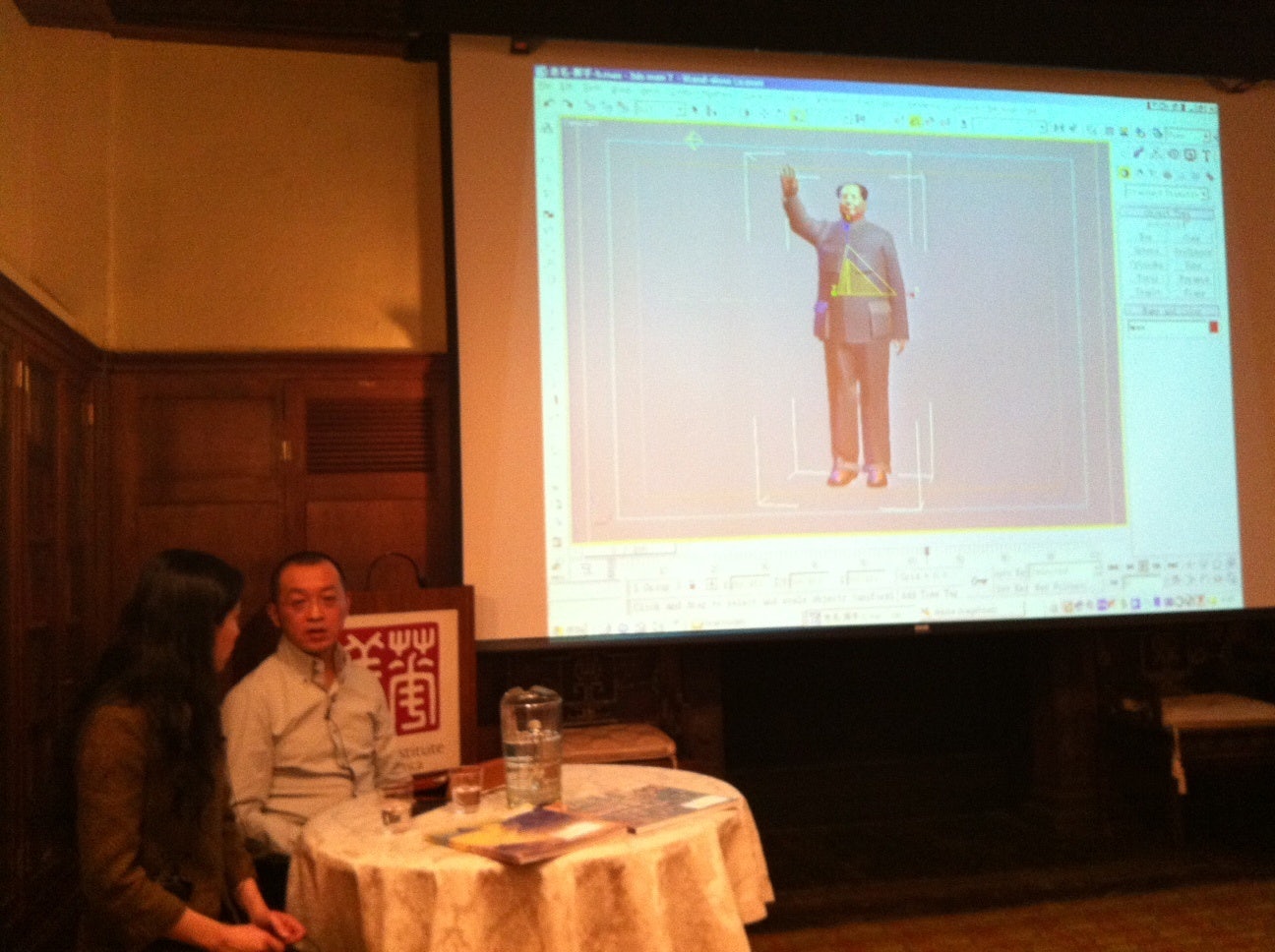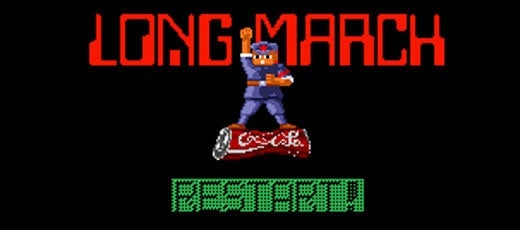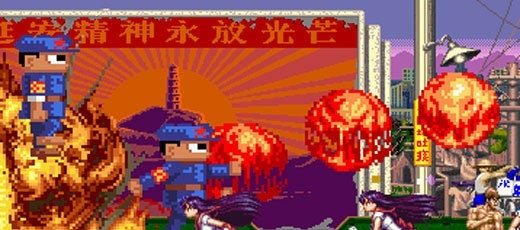Beijing Artist Speaks at China Institute Art Salon in New York#

In New York for the opening this weekend of a major work at MoMA P.S. 1, Beijing-based artist
Feng Mengbo#
spoke Tuesday night at the China Institute, offering a survey of his artistic development, his engagement with youth culture and video-game imagery, and his lifelong fascination with technology and machinery. This talk came as his recent Yi Bi Te exhibition at the Chambers Fine Art gallery in Chelsea ended and Long March: Restart is set to open on Sunday at MoMA PS1.
Assisted by Christina Yu of Chambers Fine Art, who acted as his translator, Feng Mengbo began by talking about early childhood experiences that helped shape him as an artist. He recalled playing with machine parts that his father, a mechanical engineer, always had lying around, calling it an inspiration for his later interest in technology. He showed a drawing he had done as a child in 19 70, at the height of the Cultural Revolution, which depicted a soldier with a rifle. “You can see that there’s some consistency from when I was four until now,” he said. “I’m always interested in action--such as war.”
Feng noted that even at that age, he took an interest in shapes and traces of life, outlining the oil-stains on the dessert wrapper that he’d used to draw on. As part of his education, Feng said, he was told that everyone has a mission in life--not simply to secure a good living for yourself but “to liberate the whole human race. In order to do so, you need to have guts.”
Feng went on to study traditional art for eight years, then in college studied under contemporary artist
Xu Bing#
. Feng also became involved with printmaking, which attracted him because of the machinery involved. In the 1980s, he came across the first generation of Nintendo games, which had been designed for children. Although by then he was in his 20s, he became obsessed with early games like “Duck Hunt” because, as he put it, he was interested in the idea of sitting still but being able to move images, as well as the idea of interactivity.
Feng began to use video-game imagery in his art, and these paintings were exhibited widely. But he already dreamed of designing his own video game, going so far as to contact video-game manufacturers Sega and Nintendo (with no response). In 1993, he got his first computer and, using Aldus, an early graphic design software, created a slide-show, video-game-style narrative of the Long March--the earliest iteration of his MoMA P.S. 1 piece. With a more advanced computer, Feng was finally able to create interactive works, the first being My Private Album, a presentation (and preservation) of his own family history. Later works include Taking Mount Doom by Strategy, a cross between the revolutionary opera “Taking Tiger Mountain by Strategy” and the video game DOOM; Q3, a digital movie made in 1999, in which Feng inserted himself into imagery from the popular video game Quake III; and Q4U, a customized Quake III video game shown at Documenta 11, again with himself as a character. Q4U was exhibited with three game stations, where viewers could play with Feng Mengbo as well as with online Chinese players who had downloaded the game. Ah_Q, a video game created in 2004, utilized a dance pad instead of a control stick to play.
After spending years developing computer-game-based artworks, Feng turned back to more traditional forms. “I thought about the relationship between the artist and the audience,” he said. “I think the role of the artist is very exaggerated in the contemporary art scene. Artists are sometimes almost worshipped like gods, and I think this is a total exaggeration. I don’t know where this egoist idea comes from, and I don’t think it can exist in any other industry. For example, “ he continued, “I always think that video games are art pieces themselves, but because video games circulate in a commercial context, or are not designed by one individual, they are never recognized as art.”

On his hiatus from video games, Feng Mengbo worked on two painting projects. For Built to Order, he created a 3D computer model of Mao, which he could manipulate, customizing and selecting the pose, the background, and the colors in a process that mixed technology and painting. His next project was an effort to move painting forward as an art form; influenced by traditional Chinese landscape painting, he used modern software, originally designed to build 3D landscapes for films, to create the type of Chinese landscapes depicted in traditional paintings.
Feng Mengbo returned to video games with Long March: Restart, a project that has been fourteen years in the making, in part due to technology restraints. Feng saw the Long March as a perfect subject, as it was also a long-term project that could provide a broad, panoramic stage for action. Long March: Restart, acquired by MoMA last year, is an interactive video game installation work. The central character is a Red Army soldier who fights against ghosts, demons and deities in the style of a first-generation Nintendo or Sega video character. As the game spans a vast area in the exhibition hall, the character moves freely along the stretched electronic scroll, and, as MoMa describes it, “the gamer and the audience would have to dash to catch up with the character.”
Asked if he was interested in the latest motion-sensor controlled video games, Feng described himself as not “a chaser of new technology” but “a revivalist of technology.” He talked about building Long March: Restart on software that deliberately emulates earlier video games, as he chooses to return to not only his Chinese heritage, but his own experience of playing video games.


Long March: Restart opens at MoMA P.S. 1 on Sunday, December 12 and remains on view through April 4, 2011.
Special thanks to Dr. Hsin-Mei Agnes Hsu of the China Institute for the invitation, and Chambers Fine Art for co-hosting this installment of Art Salon.
Article by Felice Jiang